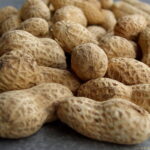Diet-Resistant Women Respond Well to Exercise
Exercise may stimulate changes to the body at a cellular level, leading to new treatment possibilities for diet-resistant women with obesity.
Right from childhood, eating healthy and being active is often emphasized. Similar messages may be repeated in cases of obesity, when patients are usually prescribed diet treatments, but what if some patients cannot respond to diet treatments? How can they stay healthy? This is where exercise comes in.
In a recent study from the University of Ottawa, Dr. Mary-Ellen Harper and a team of scientists found that physical exercise can act as a treatment when dieting alone isn’t effective in women with obesity. For this, they assessed the effect of exercise on diet-resistant women and found that exercise can improve muscle function at a cellular level and help with the reduction of body fat. These findings show that when diet fails, exercise can help.
What do we know about obesity and its treatments?
Overweight and obesity are defined by the World Health Organization as “abnormal or excessive fat accumulation that may impair health.” Obesity has been on the rise globally. Individuals with obesity are at a higher risk of various diseases. Current treatments include diet-based, exercise-based, medical, and surgical interventions for weight loss. However, individual responses to such weight loss interventions are extremely variable. In fact, there are cases where even though individuals go through diet treatments and adhere to them, they lose weight slowly and are termed diet-resistant. Such diet resistance could be attributed to various factors, including genetic factors, hormonal variations, or tissue-based and cellular factors.
RELATED: Healthy BMI Is No Longer One Size Fits All
New findings for diet-resistant individuals
In the study, published in The Lancet, a subset of women from over 228 patients with obesity were identified. Participants had been previously given a 900 kcal/day meal replacement. Diet-adherent women were then classified into different groups based on their rate of weight loss in the first 6 weeks of a 26-week program. The women whose rate of weight loss was the highest were classified as diet-sensitive and those with the least weight loss were classified as diet-resistant. The case history of these women was screened further. The screen involved checking for factors that would prevent exercise training and for any previous medical or surgical treatments to remove fat. A subset of 10 diet-sensitive and 10 diet-resistant women were shortlisted.
Diet-resistant women have a hard time losing weight with diet alone, and also have greater body fat percentage, increased fat in the lower body, fewer type I muscle fibers (which use oxygen to produce energy), fewer mitochondria (powerhouse of the cell), and hence less energy production compared to those individuals who lose weight successfully in response to diet treatments. Diet-sensitive women, on the other hand, have greater upper body fat, which can be lost more easily by low calorie diet treatments. They also have more type I muscle fibers, greater muscle mass, increased expression of genes involved in fatty acid metabolism, and greater antioxidant capacity.
Diet-resistant individuals also have different skeletal muscle characteristics. Skeletal muscles are the muscles that contract in response to stimulus. They are major sites of metabolic activity and make up a large part of our bodies. Since exercise has great benefits for muscle function and structure, scientists set out to test whether a combination of aerobic and resistance exercises could benefit diet-resistant individuals.
The exercise routine consisted of 18 supervised progressive exercise sessions performed 3 times a week for 6 weeks. Each session included 30 minutes of treadmill walking followed by resistance and core exercises. Nothing was changed about their diet or lifestyle. The participants self-reported their physical activity using a questionnaire. Moreover, activity trackers (Fitbit Charge) were used to monitor activity throughout the study.
Exercise training did not result in weight loss, but it did lead to decreased fat, waist circumference, and percentage of body fat in diet-resistant women only. Moreover, muscle strength increased in both groups of women after exercise. To determine the underlying cause of increased muscle strength, muscle protein content relative to muscle weight was assessed. It was found that exercise increased muscle protein content, indicating that there was an increase in muscle mass in diet-resistant women.
Muscles are made up of many cells, with each cell consisting of many mitochondria that produce the energy required for muscles to function. In individuals with obesity, these are dysfunctional, and hence these individuals have reduced energy. Scientists found that exercise intervention increased the content of mitochondria in diet-resistant women. Diet treatments by themselves do not have any effects on muscles or mitochondria.
The body composition, body fat, and muscle mitochondria were altered in diet-resistant women after exercise treatments. Exercising presents a way to reduce the ill effects of obesity in women with reduced response to diet treatments. This study provides insights into developing personalized treatments for obesity.
This study was published in eBioMedicine, part of the peer-reviewed journal The Lancet.
References
Dent, R., McPherson, R., & Harper, M. E. (2020). Factors affecting weight loss variability in obesity. Metabolism: Clinical and Experimental, 113, 154388. https://doi.org/10.1016/j.metabol.2020.154388
Moro, T., Brightwell, C. R., Volpi, E., Rasmussen, B. B., & Fry, C. S. (2020). Resistance exercise training promotes fiber type-specific myonuclear adaptations in older adults. Journal of Applied Physiology, 128(4), 795–804. https://doi.org/10.1152/japplphysiol.00723.2019
Pattanakuhar, S., Pongchaidecha, A., Chattipakorn, N., & Chattipakorn, S. C. (2017). The effect of exercise on skeletal muscle fibre type distribution in obesity: From cellular levels to clinical application. Obesity Research & Clinical Practice, 11(5 Suppl 1), 112–132. https://doi.org/10.1016/j.orcp.2016.09.012
Pileggi, C. A., Blondin, D. P., Hooks, B. G., Parmar, G., Alecu, I., Patten, D. A., Cuillerier, A., O’Dwyer, C., Thrush, A. B., Fullerton, M. D., Bennett, S. A., Doucet, É., Haman, F., Cuperlovic-Culf, M., McPherson, R., Dent, R. R. M., & Harper, M. E. (2022). Exercise training enhances muscle mitochondrial metabolism in diet-resistant obesity. EBioMedicine, 83, 104192. https://doi.org/10.1016/j.ebiom.2022.104192
World Health Organization. (2022). Obesity and overweight. https://www.who.int/news-room/fact-sheets/detail/obesity-and-overweight


About the Author
Vaishnavi Sridhar is a PhD candidate in Cell and Developmental Biology at the University of British Columbia. She loves discussing science, taking nature walks, and cooking in her free time.




